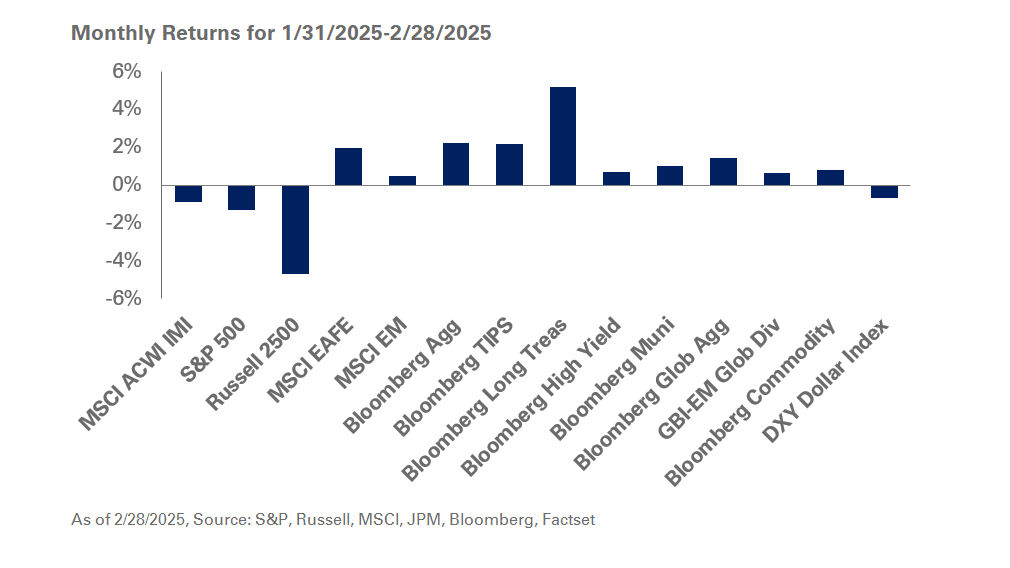In November, defined benefit pension plan sponsors likely experienced an increase in funded status fueled by gains in global equities. During this period, strong returns from global public stocks offset potential decreases in funded status resulting from modestly lower liability discount rates. Through the end of November, global public equities were in the black year-to-date. The Treasury yield curve decreased across most tenors for the month and corporate pension plans likely experienced downward pressure on funded status if they were underhedged to interest rates. NEPC’s hypothetical total-return pension plan saw an increase of 1% in funded status compared to an increase of 1.5% for our LDI-focused plan.
Rate Movement Commentary
The Treasury yield curve shifted downwards in November. The 10-year yield decreased 10 basis points to 4.18%, while the 30-year yield fell 11 basis points to 4.36%. Corporate bond spreads were slightly lower for the month and remain tight relative to historical levels.
The movement in Treasury rates and credit spreads resulted in lower pension discount rates used to value pension liabilities. The discount rates for NEPC’s hypothetical pension plans decreased about 10 basis points to 5.27% for the open total-return plan, while the discount rate for the frozen LDI-focused plan fell 11 basis points to 5.18%.
Plan Sponsor Considerations
In November, global public equities experienced gains primarily driven by strong returns from U.S. equities. Long-dated fixed-income assets posted gains as Treasury rates declined for the month. Treasury yields shifted downward last month across most maturities, while credit spreads were also slightly lower. At NEPC, we anticipate continued market volatility and the potential for market disruption. Plan sponsors should remain diligent about monitoring sources of change in funded status versus expectations, as equities and interest rates are likely to remain volatile. This includes closely monitoring interest rate hedge ratios to avoid becoming overhedged to longer-maturity rates with a changing yield curve.
Market Environment and Yield Curve Movement
U.S. equities increased 5.9% in November, according to the S&P 500 Index. During the same period, non-U.S. equities experienced losses with international developed markets down 0.6%, according to the MSCI EAFE Index. Emerging market equities were down 3.6% last month, according to the MSCI EM Index. Broadly, global equities were up 3.7% during the month, according to the MSCI ACWI Index.
In November, the Treasury curve decreased from the previous month and remains relatively flat. This generally resulted in positive performance for investment-grade fixed-income markets, with long-credit fixed income and long Treasuries posting gains. During the month, the Bloomberg Long Treasury Index rose 1.8% and the Bloomberg Long Credit Index was up 2.2%.



